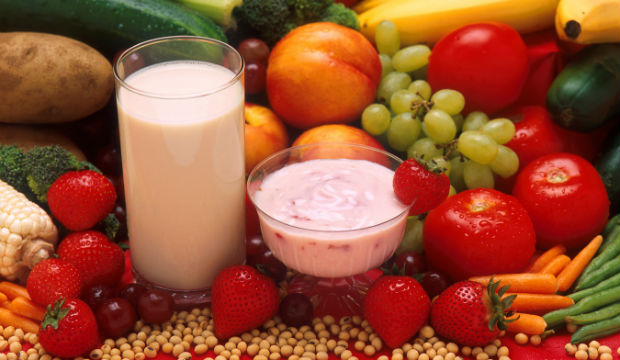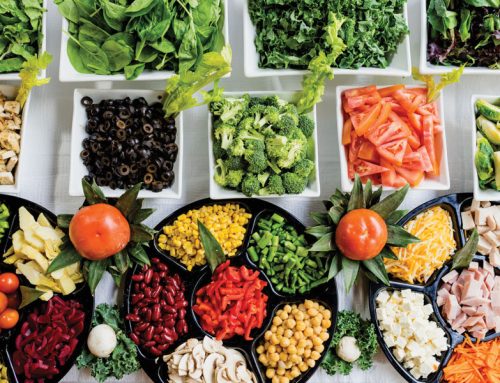Although diabetes is not a curable disease it can be managed with medication, diet and exercise. When you think of managing blood sugar, odds are you obsess over everything you can’t have. It is very difficult to cut out foods you have eaten for years, good or bad. Foods that you considered good for you, once you test, you now find your body can’t tolerate it.
While it’s certainly important to limit no-no ingredients (like white, refined breads and pastas and fried, fatty, processed foods), it’s just as crucial to pay attention to what you should eat. This is a good time to reevaluate how you look at food and try new things. The following foods are packed with the four healthy nutrients (fiber, omega-3s, calcium, and vitamin D) and are they’re exceptionally versatile, so you can use them in recipes, as add-ons to meals, or stand-alone snacks.
1. Beans
Beans have more to boast about than being high in fiber (plant compounds that help you feel full, steady blood sugar, and even lower cholesterol; a half cup of black beans delivers more than 7 grams). They’re a good source of calcium, a mineral that research shows can help burn body fat. In ½ cup of white beans, you’ll get almost 100 mg of calcium—about 10% of your daily intake. Beans also make an excellent protein source and low in saturated fat—the kind that clogs up arteries and can lead to heart disease.
Add them to salads, soups, chili, and more. There are so many different kinds of beans, you could conceivably have them every day for a week and not eat the same kind twice. Dried beans are usually more cost effective but many need to be soaked over night. If using canned beans remember to rinse well before using.
2. Dairy
You’re not going to find a better source of calcium and vitamin D—a potent diabetes-quelling combination—than in dairy foods like milk, cottage cheese, and yogurt. One study found that women who consumed more than 1,200 mg of calcium and more than 800 IU of vitamin D a day were 33% less likely to develop diabetes than those taking in less of both nutrients. You can get these nutrients from other foods, but none combine them like dairy does. Stick to fat-free or low-fat versions of your favorite dairy foods—”regular” has a lot of saturated fat.
Granted, whether you have a lactose intolerance or for special dietary restrictions (vegan), there are plenty of substitutes for cows milk. Almond milk can be purchased at most grocery stores and comes in unsweetened regular, vanilla and chocolate flavours. There are also many other dairy products that are soy or nut base. See the nutritional values below comparing cows milk with unsweetened vanilla almond milk.
Drink milk or milk alternative with some meals instead of soda or sugary juices, have yogurt or cottage cheese as a snack or dessert, and use milk or unsweetened almond milk to make oatmeal or thicken certain soups.
3. Salmon
Nutritionists can’t recommend this seriously healthy fish enough. It’s a rich source of omega-3 fatty acids (3 ounces provides as much as 1,800 mg), healthy fats that reduce the risk of heart disease, shrink your waistline, reduce inflammation, and improve insulin resistance. Salmon is also one of the best nondairy sources of vitamin D around.
Sauté a salmon fillet for dinner instead of chicken or meat once or twice a week (it’s easy to season and toss in the oven), or add canned salmon to salads or omelets.
Two of my favourite salmon dinners are delicious salmon sausages from @LongosMarkets perfect for the grill. These burgers are quick, easy and cheap. If you throw these burgers on the grill remember to use oiled tinfoil to prevent sticking. They are however, best cooked in a frying pan.
4. Tuna
Another amazingly healthy fish, a 3-ounce piece of tuna contains 1,300 mg of omega-3s and a respectable amount of vitamin D to boot. But tuna can be high in mercury, a compound that may cause neurological problems in huge doses. To be safe, buy canned light tuna instead of albacore and limit your tuna intake to 12 ounces a week.
Make tuna salad sandwiches, pile on whole wheat crackers as a snack, or throw steaks on the grill instead of burgers.
5. Barley
One of the healthiest grains you’re probably not eating, barley is rich in a specific kind of soluble fiber called beta-glucan. Research shows beta-glucan can lower total and LDL cholesterol by preventing your body’s ability to absorb it; one review found that consuming just 3 grams a day—about the amount in a single barley serving—can lower cholesterol by 8%. Thanks to its fiber abundance, barley can also help steady your blood sugar while filling you up—a weight loss bonus. The grain even boasts a modest amount of calcium.
Look for hulled barley, which isn’t as refined as the pearl barley that supermarkets typically carry (you may need to visit a health food store). Soak it overnight before cooking, then add to soups, stews, or rice pilaf.
6. Oats
Like barley and beans, oats are a diabetes power food because of their fiber content—a half cup of instant oats provides 4 g. Research shows that oat lovers can also lower total and “bad” LDL cholesterol and improve insulin resistance. All the soluble fiber oats contain slows the rate at which your body can break down and absorb carbohydrates, which means your blood sugar levels stay stable.
The easiest way is straight from your cereal bowl, but you can also sneak oats into all kinds of recipes, from pancakes
to meat loaf to cookies.
NB: Grains can have a wide range of reaction with one’s blood sugar. Make sure you test when trying something new. At time of diagnosis some suggested we try oatmeal. Even though it’s a carbohydrate, it’s a very good carbohydrate because it’s high in soluble fiber. For us oatmeal spiked the blood sugar to 14 for 3 hours! So obviously oatmeal is not on OUR list of things to eat. This could be different for you.
7. Berries
Berries are nature’s candy—but unlike sugary confections from the checkout aisle, they’re loaded with fiber and antioxidants called polyphenols. A cup of blackberries supplies 7.6 g of fiber; blueberries contain 3.5 g. Berries’ antioxidants are also good for your ticker: One 2008 study in the American Journal of Clinical Nutrition found that people with heart disease risk factors who ate berries for 8 weeks had a drop in blood pressure and a boost in “good” HDL cholesterol.
Wonderful alone, berries are also tasty when stirred into oatmeal, ice cream, or even salads. Fresh berries freeze well, so if you’re not going to eat them right away, store them in your freezer so you always have some on hand.
8. Dates
These chewy fruits aren’t much to look at—plain and brown and a little sticky. Their palate-pleasing nature, combined with a generous supply of fiber (7 dates supply 4 g), makes them a perfect diabetes-friendly snack. They’re also jam-packed with antioxidants—with more per serving than grapes, oranges, broccoli, and peppers, according to one study.
Stuff dates with pecan or walnut halves for a satisfying snack, or toss them into breads and cookies.
9. Greens
You’re probably thinking of lettuce, but this category of veggie—a staple of Southern cooking—is incredibly diverse, with choices such as turnip, mustard, and beet greens, as well as chard. All are outstanding sources of fiber (1 cooked cup of any of the aforementioned supplies between 3 and 6 g) and calcium (100 to 250 mg per cup). Greens may also be good for your heart, thanks to the folate they contain. This B vitamin appears to lower levels of homocysteine, an amino acid that in high amounts can raise heart disease risk. Research shows getting 400 mcg of folate a day can lower homocysteine by 25% (a cup of cooked turnip greens contains 170 mcg).
Unless you’ve grown up with greens, you may consider them an acquired taste, but prepared just right, they’re delicious! Use them in entrées, sandwiches, and salads. Or simply toss mustard, collard, or beet greens with artichoke hearts and sauté in olive oil.
10. Lentils
Like their bean cousins, lentils are loaded with fiber—1 cup cooked contains a whopping 16 g. That same cup also delivers close to 360 mcg of folate, just shy of the 400 that adults need each day. If you’re not a meat person, lentils are a good alternative source of protein; they also contain a variety of vitamins and minerals.
Add to soups and pastas for extra texture, or enjoy as a side dish in lieu of beans. Feeling more adventurous? Try a spicy Indian dish that uses lentils as a staple ingredient, like tadka dal, made with green chiles and garlic.
11. Flaxseed
They may be tiny, but the seeds of the flax plant pack a big health punch. Flaxseed is best known as a source of fiber and alpha-linolenic acid (ALA), which your body converts to omega-3s EPA and DHA. In several large studies, researchers have found a link between increased ALA intake and lower odds of heart disease, heart attack, and other cardiovascular issues. These magic seeds also show promise for lowering cholesterol and blood sugar. Most nutrition experts recommend ground over whole flaxseed because the ground form is easier for your body to digest. Whole flaxseed may pass through your intestine undigested, which means you won’t get all the benefits.
Add ground flaxseed to all kinds of food, such as oatmeal, low-fat cottage cheese, and fruit smoothies.
12. Walnuts
Just 1 ounce of these healthy nuts (about 14 halves) delivers almost 2 g of fiber plus 2.6 g of ALA, the omega-3 precursor. But you get about 185 calories in that same ounce, so count out a proper portion if you’re watching your weight.
Aside from a stand-alone snack, chopped walnuts make a great topping for salad and add a bit of crunch to cookies and brownies.
13. Honourable mention: Peanut butter
Believe it or not, some studies have linked peanut butter to reduced diabetes risk. The fiber content (2 tablespoons has almost 2 g) may have something to do with it. And since this classic comfort food contains mostly monounsaturated fat, it’s considered heart healthy. The calories are on the high side, however, so pay attention to the serving size.
14. Honourable mention: Dark chocolate
Rich in antioxidant flavonoids, this deceptively decadent sweet may help improve your good and bad cholesterol and reduce your blood pressure. One ounce contains 136 calories and 8.5 g of fat, so nibble just a little. A great combination: shaved or melted dark chocolate over raspberries or strawberries for a light and healthy dessert.







